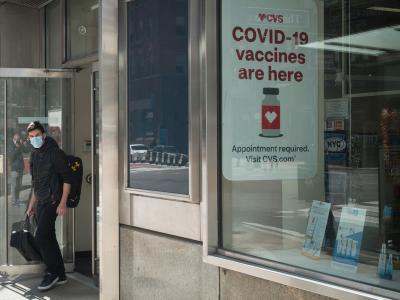Our weekly wrap-up of antimicrobial stewardship & antimicrobial resistance scans
Report says COVID-19 holds lessons for response to AMR
Originally published by CIDRAP News Nov 19
The COVID-19 pandemic, and the global response, contain important lessons that can be used to avert a future pandemic caused by antimicrobial resistance (AMR), according to a new report from the Global Antibiotic Research and Development Partnership (GARDP).
The report notes that while there are differences between fast-moving viral pandemics and the slower-moving "silent pandemic" of AMR, the COVID-19 pandemic has underscored what happens when governments are unprepared, international cooperation is low, and treatments, diagnostics, and vaccines are not available. As a result, the pandemic is reinforcing the importance of research, development, and equitable supply of medical countermeasures to treat and prevent pandemic diseases and presenting an opportunity to improve the response to future pandemics, including those caused by drug-resistant infections, the authors say.
Among the lessons highlighted in the report are that investments in preparedness are necessary, collaboration and international cooperation are critical, and that equitable and affordable access to medical countermeasures is an essential element of effective pandemic response. But inequitable access to medical countermeasures can undermine the trust that many nations have in the international system.
To prepare for a pandemic of drug-resistant infections, the report recommends five concrete steps that the global community can take. These include recognizing and addressing antibiotic resistance; investing in development of medical countermeasures; ensuring that access to treatments, diagnostics, and vaccines for all is a cornerstone of pandemic preparedness and response; expanding global cooperation within a One Health framework; and making low- and middle-income countries equal partners in a comprehensive response.
"AMR requires a long-term investment and is an opportunity for governments to find a collective approach to global health that is fair to all; that prioritises coordination, partnership and solidarity; that takes a multisectoral and multilateral approach; and that satisfies public health needs and human life over economic and political considerations," the report concludes. "Achieving this would cascade into lasting and life-saving benefits for people and countries across the world."
Nov 17 GARDP report
UK farmers, veterinarians set new targets for antibiotic use in animals
Originally published by CIDRAP News Nov 19
A task force of veterinarians and farmers in the United Kingdom yesterday released new targets for responsible use of antibiotics in farm animals.
The goals for 2021 through 2024, laid out in a report from the Responsible Use of Medicines in Agriculture Alliance (RUMA), include a 30% decrease in antibiotic use in pigs, reductions of 15% in dairy herds and 25% in calf rearing units, and a 40% reduction in game birds.
"We look forward to working with the sectors as we continue on this endeavour, which will ultimately be of benefit to the reputation of the UK livestock sectors as well as helping to protect human and animal health," Peter Borriello, PhD, chief executive of the UK's Veterinary Medicines Directorate, said in a RUMA press release.
The new goals were released the same day as the UK Veterinary Antibiotic Resistance and Sales Surveillance Report (UK-VARSS 2019), which showed a 45% decline in sales of antibiotics for food-producing animals from 2015 through 2019 (despite a 5% increase between 2018 and 2019), and 74% decline in the sales of highest-priority critically important antibiotics. The report also showed lower levels of antibiotic resistance in Escherichia coli in healthy pigs at slaughter compared with 5 years ago.
RUMA says its initial targets, released in 2017, have helped UK farmers achieve the antibiotic sales reductions documented in the UK-VARSS report. Over 75% of the 2017 targets have already been achieved or are on track to be achieved by December.
"The UK farming industry has responded extremely well to the targets. Our original aim of lowering overall antibiotic use, and in particular highest-priority critically important antibiotics (HP-CIAs), has been categorically achieved in the face of some challenging external conditions," said RUMA chair Catherine McLaughlin.
Nov 18 RUMA press release
Nov 18 RUMA 2020 targets task force report
Nov 18 UK-VARSS 2019 report
UK reports show rise in resistant infections, drop in gonorrhea resistance
Originally published by CIDRAP News Nov 19
Two reports released yesterday by Public Health England (PHE) highlight good and bad news on antibiotic-resistant infections in humans.
The English Surveillance Programme for Antimicrobial Utilisation and Resistance (ESPAUR) report shows a 17% increase in incidence of bloodstream infections caused by key bacterial species (E coli, Klebsiella pneumoniae, Enterococcus spp) between 2015 and 2019 and a 32% increase in antibiotic-resistant bloodstream infections caused by those species, with an estimated 18,110 antibiotic-resistant bloodstream infections diagnosed in England in 2019 (up from 13,671 in 2015). Overall, the report estimates there were 65,162 severe antibiotic-resistant infections diagnosed in 2019, up from 61,946 in 2018.
But the report also shows that antibiotic consumption in England has fallen since peaking in 2014, with total use declining from 19.4 defined daily doses per 1,000 inhabitants per day in 2015 to 17.4 in 2019, driven largely by a 12.2% decline in antibiotic prescribing in general practices and a 19.5% decline in dental practices. Antibiotic consumption rose, however, in other community settings and in hospital inpatients and outpatients.
The report from the Gonococcal Resistance to Antimicrobial Surveillance Programme (GRASP), meanwhile, found that the proportion of Neisseria gonorrhoeae isolates in England and Wales with reduced susceptibility to ceftriaxone—the current first-line therapy for gonorrhea in England—fell from 7.1% in 2018 to 2.9% in 2019, following a steady increase from 2013 through 2018. Outside of the sentinel surveillance system, three cases of ceftriaxone-resistant gonorrhea were confirmed by PHE in 2019.
The surveillance report also showed a slight decline in azithromycin resistance (9.8% to 9.3%) and a decline in cefixime resistance (2.2% to 0.8%).
"The effectiveness of first-line treatment for gonorrhoea continues to be threatened by the development of antimicrobial resistance," the report said. "However, the decline in reduced ceftriaxone susceptibility, together with decreasing cefixime resistance and stable rates of azithromycin resistance, are encouraging developments."
Nov 18 PHE ESPAUR report
Nov 18 PHE GRASP report
CARB-X to fund development of monoclonal antibody for biofilm infections
Originally published by CIDRAP News Nov 18
CARB-X announced today that it is awarding up to $2.42 million to Clarametyx Biosciences of Columbus, Ohio, to develop a monoclonal antibody treatment for serious infections caused by bacterial biofilms.
The money from CARB-X (the Combating Antibiotic Resistant Bacteria Biopharmaceutical Accelerator) will help fund preclinical development of CMTX-101, a monoclonal antibody designed to rapidly collapse bacterial biofilms by targeting a region of DNABII-binding proteins that help stabilize and maintain biofilm integrity.
Biofilms are communities of microbes that can grow on medical devices and human tissue and form a protective layer around bacteria. They are highly resistant to antibiotics and the immune system and are therefore difficult to treat.
"Bacterial biofilms are a serious global health concern due to their ability to resist both antibiotics and the host’s immune system," Erin Duffy, PhD, director of research and development at CARB-X, said in a press release. "We urgently need new therapeutics to address life-threatening bacterial infections. Clarametyx is developing an exciting new approach that could be effective against a broad range of serious drug-resistant pathogens and also numerous types of infections."
Clarametyx will be eligible for an additional $11.85 million if it meets project milestones.
Since launching in 2016, CARB-X has awarded more than $259 million to 73 projects focused on antibiotic-resistant bacteria.
Nov 18 CARB-X press release
Study links COVID restrictions to increased UK dental antibiotic use
Originally published by CIDRAP News Nov 17
A study published late last week in the British Dental Journal suggests that restricted access to dental care in England during the early months of the COVID-19 pandemic resulted in a sharp rise in dental antibiotic prescribing.
In the study, researchers from the National Health Service (NHS) and the University of Manchester analyzed NHS data on dental antibiotic prescriptions dispensed by community pharmacists from January 2018 to July 2020. They aimed to describe trends in overall dental antibiotic use across England during that period and compare trends in the rate of use between the seven NHS England regions from April 2020, when COVID-19 restrictions were first put in place and dental practices were restricted to providing remote management of patients, to July 2020.
The results showed a downward trend in the number of antibiotic prescriptions dispensed to NHS dental patients up until March 2020, followed by a sharp upward trend that started in April 2020 and plateaued in July 2020 after dental practices were allowed to reopen. Compared to April to July 2019, dental antibiotic prescribing was 25% higher in April to July 2020. All areas of the country saw increases in prescribing in May and June, with the highest increase in London (60%) and lowest in the South West of England (10%). Overall, the highest rate of antibiotic dispensing to NHS dental patients occurred in the East of England in June (6.1 antibiotic prescriptions per 1,000 population).
The study was released on the same day as a white paper from FDI World Dental Federation that highlights how dental teams can help raise awareness, prevent and control infections, and optimize the use of antibiotics to help tackle the problem of antibiotic resistance.
"Patients waiting for access to care often receive more antibiotics than those patients who receive the right treatment immediately," study and white paper lead author Wendy Thompson, PhD, of the University of Manchester, said in a press release. "As dental care provision returns to a 'new normal' in the COVID-19 era, it is important to ensure access to high-quality, urgent dental care and to optimize the use of antibiotics."
Nov 13 Br Dent J study
Nov 13 FDI World Dental Federation white paper
Nov 13 FDI World Dental Federation press release
Reports cites gaps in TB diagnosis, prevention, and treatment
Originally published by CIDRAP News Nov 17
A report published yesterday by the Stop TB Partnership and Médecins Sans Frontières highlights policy gaps that the two groups say are undermining progress in the fight against tuberculosis (TB), including drug-resistant (DR)-TB.
The Step Up for TB 2020 report, which examines the national TB policies of 37 high-burden countries and assesses the extent to which they align with World Health Organization (WHO) guidelines and recommendations, finds that many of the countries have outdated diagnostic, treatment, and prevention policies. For example, while more than 80% indicate they are able to use rapid molecular tests as the initial diagnostic test for TB, many countries have not implemented this policy at scale, and less than a quarter of the countries offer a comprehensive set of drug susceptibility testing methods to ensure TB patients aren't being treated with drugs against which their bacteria are resistant.
On treatment, the report finds that only 61% of countries are using the modified, shorter all-oral treatment for DR-TB recommended by the WHO, while nearly half are still using regimens containing the most toxic injectable medicines. Only 65% of countries have policies for the type of shorter TB preventive treatment that can help reduce the number of latent TB infections that develop into active infections, and only half of the countries surveyed screen household members of people who have TB.
"Earlier this year, the COVID-19 pandemic hit the world with devastating impact, and governments around the world quickly adopted new policies and laws in response," Lucica Ditiu, MD, executive director of the Stop TB Partnership, said in a press release. "Meanwhile, TB remains the top infectious disease killer, even though it is preventable and curable. To make matters worse, most countries still use outdated policies, practices, tools and treatment regimens."
The report calls for countries to make relevant policy reforms a central part of their national TB response to meet the United Nations 2022 TB targets. Among those targets are diagnosis and treatment of 40 million people who have active TB and 30 million who have latent TB infection.
Nov 16 Stop TB Partnership press release
Nov 16 Step Up for TB 2020 report











